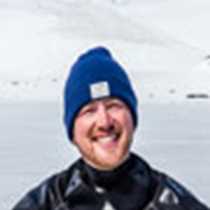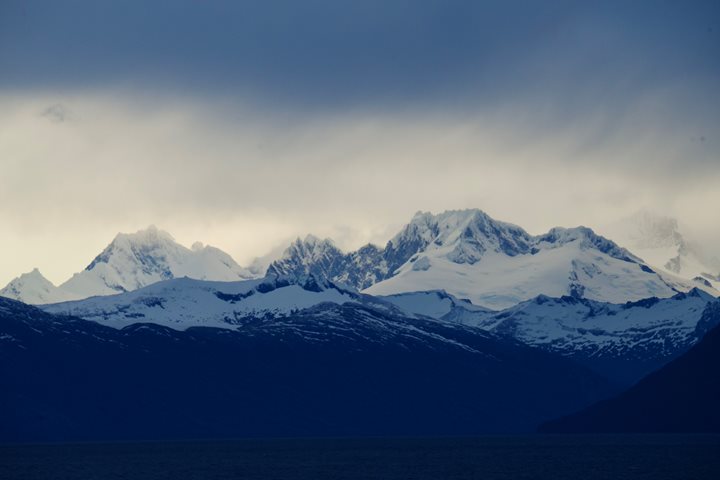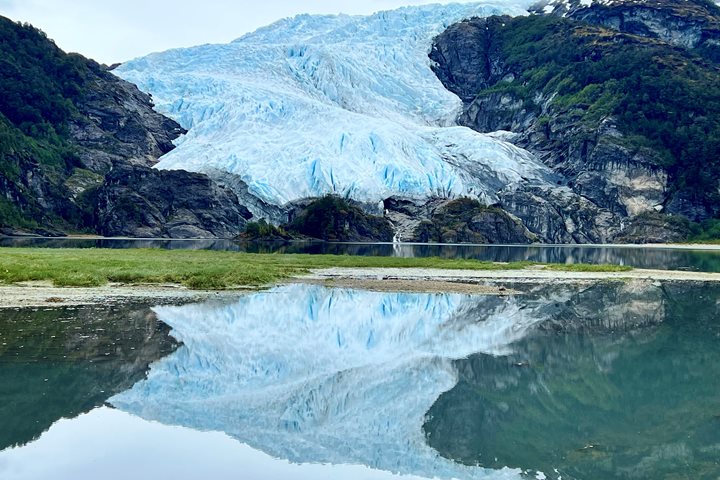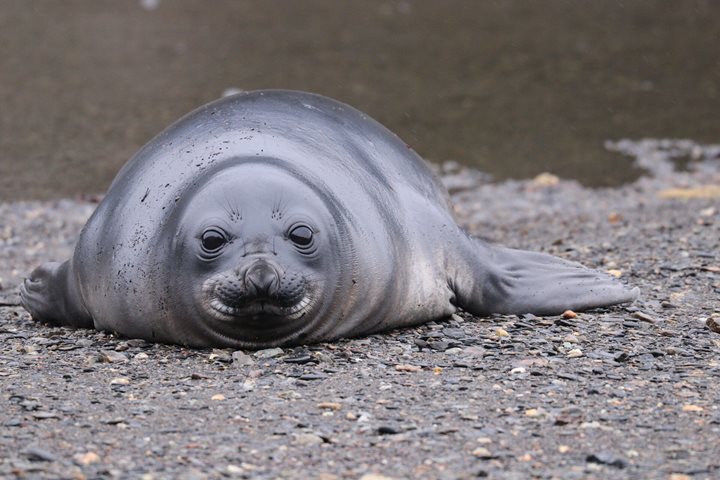We awoke to beauty. The National Geographic Explorer floated calmly in front of a glacier chosen specially by our Chilean navigation pilots on board, a holding area to await the daylight needed for us to safely traverse the English Narrows. All hands were on deck for the weaving passageways of the narrows, a spot that must have been quite a nervous endeavour when the likes of Magellan were first passing through. The afternoon was full of ice once again, this time in front of the longest glacier in the whole of South America: Pio XI – named after none other than the Pope himself.
11/10/2024
Read
National Geographic Resolution
Garibaldi Glacier, Romanche Fjord, and Beagle Channel
The first rays light up the northwestern branch of the Beagle Channel. In the distance mountains glow in pale yellows and oranges as well as the water’s many birds, including a flock of hundreds of sooty shearwaters as they search for food. By breakfast we are at the entrance of the Garibaldi Fjord, steep gray rock walls on either side, and at the end the beautiful eponymous glacier. We head out on Zodiac cruises to get closer views of the tortured rocks, beautiful waterfalls, stunted forests, and of course wait for the glacier to calve. It obliges us many times. During the afternoon, we nose into the Romanche Fjord and then head out to sail along the Beagle Channel. Along the way we encounter many seabirds. Before dinner we attend the captain’s farewell cocktails and enjoy the guest slideshow before heading down to our special asado dinner! Our remarkable expedition through the Chilean Fjords is coming to an end. We have all witnessed some amazing wildlife encounters and marveled at the beauty of the Torres del Paine Massif. Memories we have aplenty, which will be cherished for many a year.







